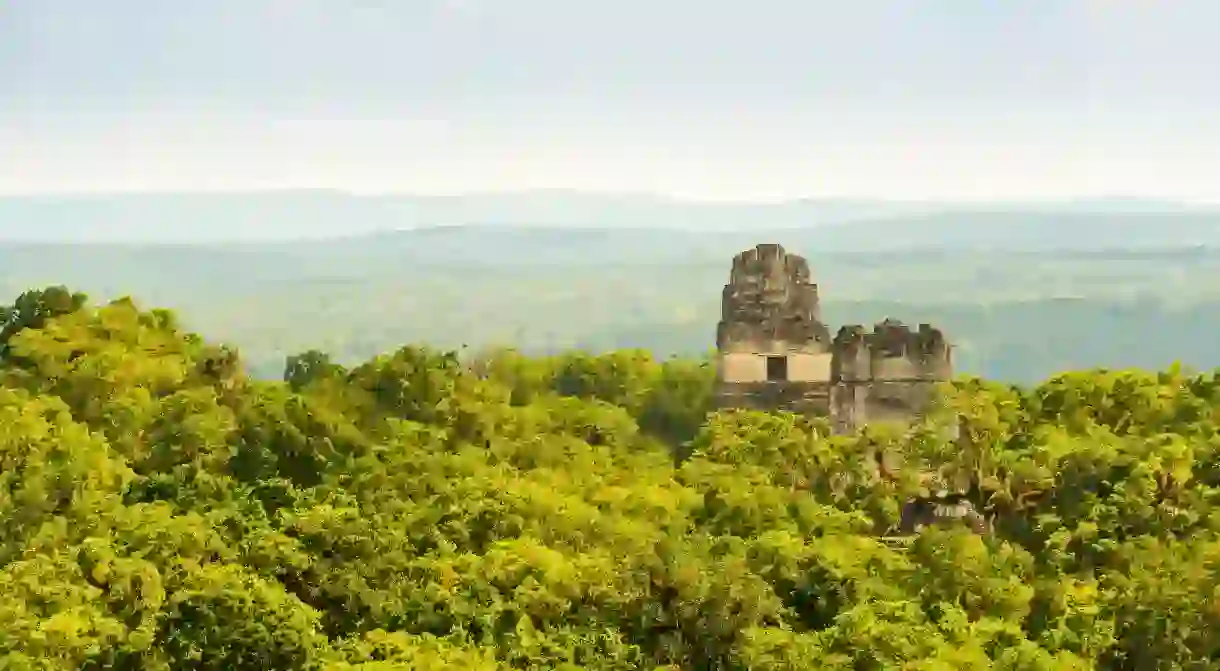Latin America's Most Historic Buildings

With pre-Columbian temples and colonial Baroque churches, this part of the ‘New World’ has plenty to offer in terms of historical architecture. Here are 10 buildings in Latin America that tell stories of the region’s rich history, from some of the world’s largest and oldest pyramids to dreams of bringing the Paris Opera House to the Amazonian jungle.
Did you know – Culture Trip now does bookable, small-group trips? Pick from authentic, immersive Epic Trips, compact and action-packed Mini Trips and sparkling, expansive Sailing Trips.
Humberstone and Santa Laura Saltpeter Works

Deep in the remote Atacama Desert, this abandoned mining town was named a UNESCO World Heritage Site in 2005. The Humberstone and Santa Laura works were founded in 1880 to mine sodium nitrate, which was in high demand as a fertilizer. Thousands of Peruvians, Chileans and Bolivians migrated here to work in these harsh conditions, and developed their own distinct ‘Pampino’ culture in the process. The Pampinos’ struggle for just working conditions was a defining political movement in Chile at the turn of the century.
Machu Picchu, Peru

Undoubtedly one of the most iconic places in the world, Machu Picchu is a 15th-century settlement of the Inca kingdom, built atop a ridge, 2,500 meters above sea level in the Andes Mountains. Machu Picchu was abandoned before the Spanish Conquest and remained unknown internationally until the 20th century. It is in the process of reconstruction, and among the many temples and pyramids still standing are the Pyramid of Intihuatana, with large steps built into the slope of the mountain, and the spacious Main Plaza.
Pyramid of the Sun, Teotihuacan, Mexico

The Pyramid of the Sun is the largest structure in the ancient city of Teotihuacan. Teotihuacan’s origins are a mystery, having been built, and subsequently abandoned, more than 1,000 years before the arrival of the Aztecs. Work probably began on the Pyramid of the Sun in 100AD, some 200 years after the origins of Teotihuacan itself, and the completed structure stands at 75 meters in height, making it the third-largest pyramid in the world. Archaeologists have discovered the gruesome remains of animal and human sacrifices within the building. Teotihuacan is within easy reach of Mexico City, only 30 miles away.
San Ignacio Miní, Argentina

San Ignacio Miní is one of the best preserved of the numerous Jesuit missions that are dotted around northern Argentina and southern Brazil. These ‘reducciones’ were built in the middle of the tropical rainforest to house, educate and convert the Guaraní people. Indeed, these buildings tell the turbulent story of European colonization and evangelization in South America. San Ignacio was founded in 1611, and moved to its present site in 1696. It is the best preserved of the missions, many of which are in a sorry state; testament to the expulsion of the Jesuits from the Spanish and Portuguese Empires in 1767.
Santa María de Loreto, Chiloé, Chile
Santa María de Loreto, in the town of Achao, is one of the finest examples of the many wooden churches built in the Chiloé Archipelago by Jesuit missionaries and locals. These churches were designated as UNESCO World Heritage Sites in 2000 for their unique blend of indigenous artisanal traditions with European Christian culture: the wooden structures were built entirely with local timber, and Santa María de Loreto, started in 1740, is the oldest such church in Latin America. They were built to house Jesuit missionaries on their tours of the islands.
Santuario de Las Lajas, Colombia

Few buildings could be so dramatically located as Las Lajas: a neo-gothic church, as if transported from northern Europe, suspended between a river gorge, with lush vegetation spilling in alongside the steep cliffs around it. The site, close to the Ecuadorean border, has been a place of pilgrimage since the 18th century, after reports of an apparition of the Virgin Mary at on one of the ‘lajas’ (flat stones that make up the gorge). The original shrine was replaced with the current one, completed in 1949.
São Francisco de Assis, Ouro Preto, Brazil

This church is considered one of the finest examples of Brazilian Baroque architecture, an elaborate and ornamental gem buried in the hills of Minas Gerais. Ouro Preto’s wealth of historic architecture is testament to its importance as a gold-mining town and, at one point, it was one of the largest cities in the Americas. São Francisco, founded in 1766, was designed by the celebrated sculptor and architect Aleijadinho, ‘the Cripple’ who is believed to have suffered from leprosy. The façade is considered one of his finest works.
Teatro Amazonas, Brazil

This magnificent, belle-époque opera house in the Amazonian capital of Manaus was the fruit of the city’s wealth during the ‘rubber boom’ in which the export of Amazonian rubber briefly left it with unlimited riches. No expense was spared in the construction of the Teatro Amazonas, completed in 1861: Italian marble for the stairs and the columns, Parisian furnishings and British steel were imported to ensure the highest quality. Even the roofing tiles, imported from Alsace, are laid out in the color of the Brazilian flag. The Teatro Amazonas is testament to a dream of bringing Europe to the jungle.
Tikal, Guatemala

This ancient city was one of the jewels of the powerful Mayan empire, built in the 6th century and populated for approximately 400 years. Nowadays, Tikal is a truly breathtaking site, with stone ruins scattered across luscious rainforest. It is also an archaeological treasure trove, with its rediscovery in 19th century unearthing numerous clues about Mayan society, including a meticulous list of Tikal’s rulers. Tikal is located in northern Guatemala, near the border with Belize and the Yucatán Peninsula, where numerous other Maya cities survive.













